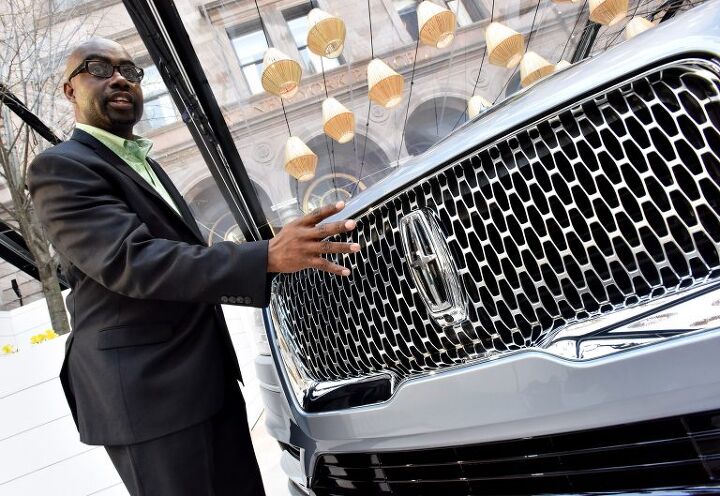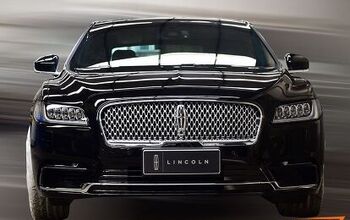Chasing the Dragon: Lincoln's Plan to Capture the Chinese Market

While both Buick and Cadillac have a healthy lead over Lincoln in terms of domestic deliveries, the space between them is far more pronounced in China. At home, Ford moved 111,159 examples of its premium marque in 2017 against Cadillac’s 156,440. However, China’s Caddy sales clocked in at 175,489 last year — a number Lincoln could only muse about in its wildest fantasies.
That’s because Ford exports all of its luxury vehicles to China, while GM tends to build them locally. But the Lincoln brand shows a lot of promise in Asia. Ford moved roughly 80,000 vehicles in the People’s Republic in 2017 and 54,124 of those models wore the Lincoln cross. In theory, if Ford could localize and bolster its product lineup within the country, a higher volume would be all but assured. It’s a theory the automaker intends to test, too.
According to Reuters, the Lincoln brand intends to build as many as five new vehicles in China by 2022. Officially, Ford has only said there will be a Chinese crossover by the end of 2019, but sources say Lincoln will also build the Aviator in China by the start of 2020, along with the successors to the MKC compact crossover and the MKZ midsize sedan. Following those models in 2021 is the Nautilus, which replaces the MKX.
Another small Lincoln crossover might enter Chinese production in 2022.
“Our localization plans to support the China market are on track and will serve to further drive Lincoln’s growth in China,” explained Lincoln spokeswoman Angie Kozleski. “Beyond that, it would be premature to discuss our future product and production plans or timing.”
With China still running a 25 percent import tariff on cars, Ford literally can’t compete with GM in that market by shipping cars from America. Even if the country softens the fee, which President Xi Jinping has promised, there’s no guarantee it will be enough to level the playing field. So Ford intends to build more cars in China, rather than gamble on bolstering U.S. output and attempting to export a gaggle of new models.
However, sources claim Chinese production of the first Lincoln-badged vehicles won’t commence for at least another 18 to 24 months. Ford is already playing catch-up, as the Lincoln brand only entered the Chinese market in 2015. Meanwhile, Cadillac has been there since 2004, allowing itself to establish a stronger dealer network and set up factories in-country. China is now the brand’s largest market by volume.
Lincoln wants a taste of that action and better access to the country’s 1.37 billion prospective customers, but the only way to do that under the current trade laws is to set up shop there.
What will this mean for America? Well, there is a chance Ford could eventually shift production of specific models exclusively to the People’s Republic, resulting in “American-made” Chinese exports — like the Buick Envision or the Cadillac CT6. Powertrain offerings will likely be highly influenced by the country’s strict electrified vehicle mandate. A significant portion of these new Lincoln vehicles have hybrid variants.
Really, Lincoln had no choice. China has surpassed the United States as the world’s largest new car market and businesses aren’t in the practice of not chasing down money. “As long as Lincolns are not manufactured in China, the brand’s sales will no doubt suffer continuously,” said Zhu Kongyuan, Secretary General of the China Auto Dealers Chamber of Commerce.
[Image: Ford Motor Co.]

A staunch consumer advocate tracking industry trends and regulation. Before joining TTAC, Matt spent a decade working for marketing and research firms based in NYC. Clients included several of the world’s largest automakers, global tire brands, and aftermarket part suppliers. Dissatisfied with the corporate world and resentful of having to wear suits everyday, he pivoted to writing about cars. Since then, that man has become an ardent supporter of the right-to-repair movement, been interviewed on the auto industry by national radio broadcasts, driven more rental cars than anyone ever should, participated in amateur rallying events, and received the requisite minimum training as sanctioned by the SCCA. Handy with a wrench, Matt grew up surrounded by Detroit auto workers and managed to get a pizza delivery job before he was legally eligible. He later found himself driving box trucks through Manhattan, guaranteeing future sympathy for actual truckers. He continues to conduct research pertaining to the automotive sector as an independent contractor and has since moved back to his native Michigan, closer to where the cars are born. A contrarian, Matt claims to prefer understeer — stating that front and all-wheel drive vehicles cater best to his driving style.
More by Matt Posky
Latest Car Reviews
Read moreLatest Product Reviews
Read moreRecent Comments
- ToolGuy First picture: I realize that opinions vary on the height of modern trucks, but that entry door on the building is 80 inches tall and hits just below the headlights. Does anyone really believe this is reasonable?Second picture: I do not believe that is a good parking spot to be able to access the bed storage. More specifically, how do you plan to unload topsoil with the truck parked like that? Maybe you kids are taller than me.
- ToolGuy The other day I attempted to check the engine oil in one of my old embarrassing vehicles and I guess the red shop towel I used wasn't genuine Snap-on (lots of counterfeits floating around) plus my driveway isn't completely level and long story short, the engine seized 3 minutes later.No more used cars for me, and nothing but dealer service from here on in (the journalists were right).
- Doughboy Wow, Merc knocks it out of the park with their naming convention… again. /s
- Doughboy I’ve seen car bras before, but never car beards. ZZ Top would be proud.
- Bkojote Allright, actual person who knows trucks here, the article gets it a bit wrong.First off, the Maverick is not at all comparable to a Tacoma just because they're both Hybrids. Or lemme be blunt, the butch-est non-hybrid Maverick Tremor is suitable for 2/10 difficulty trails, a Trailhunter is for about 5/10 or maybe 6/10, just about the upper end of any stock vehicle you're buying from the factory. Aside from a Sasquatch Bronco or Rubicon Jeep Wrangler you're looking at something you're towing back if you want more capability (or perhaps something you /wish/ you were towing back.)Now, where the real world difference should play out is on the trail, where a lot of low speed crawling usually saps efficiency, especially when loaded to the gills. Real world MPG from a 4Runner is about 12-13mpg, So if this loaded-with-overlander-catalog Trailhunter is still pulling in the 20's - or even 18-19, that's a massive improvement.


































Comments
Join the conversation
Artist or song? Or both? Steely Dan - 'Time Out of Mind' (Gaucho)
Living hard will take its toll